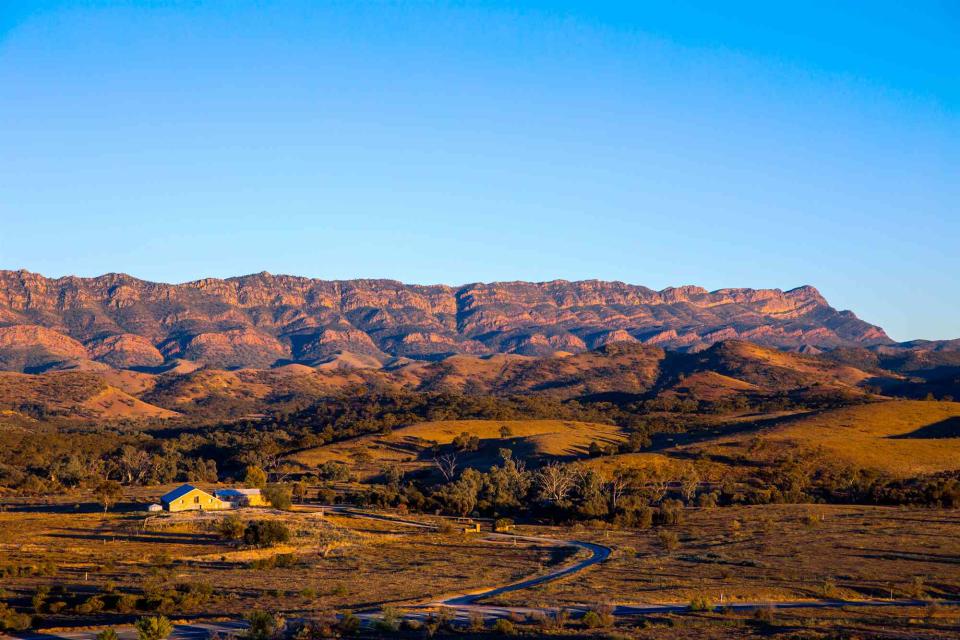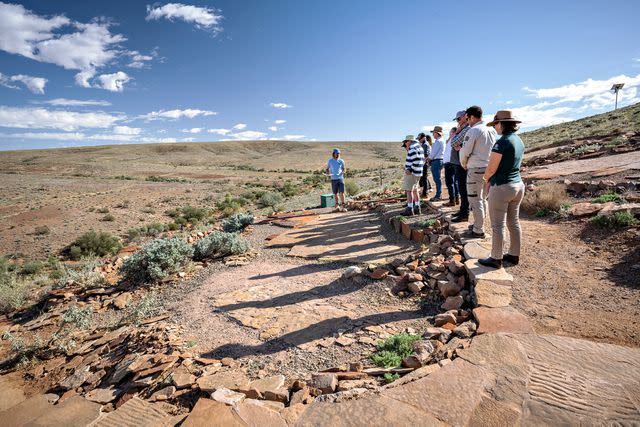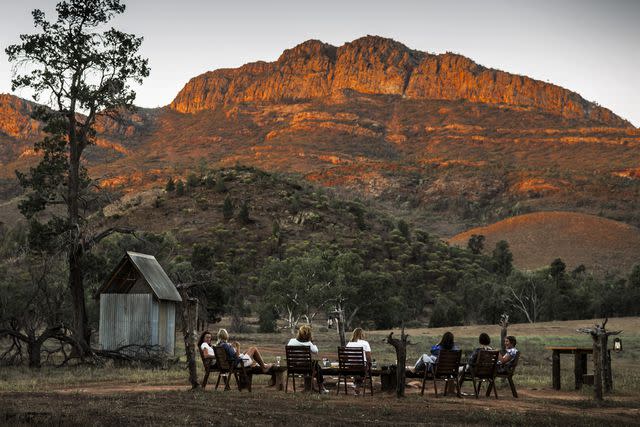Australia’s Newest National Park Has 550-million-year-old Fossils — and a Rich Aboriginal Culture
A new national park in the Australian outback is shining a light on the planet’s oldest records, as well as the culture of the land’s traditional guardians.

Richard I'Anson/Courtesy of Arkaba Conservancy
The Arkaba Conservancy, a lodge and wildlife reserve in Australia’s Flinders RangeThe rugged, lonely landscape of the Flinders Ranges, five hours north of Adelaide, in South Australia, feels prehistoric — and it is. The region is home to both the oldest Aboriginal culture and some of the planet’s earliest geologic and biological records — including fossils of the ediacaran biota, multicellular organisms from 550 million years ago.
That depth of history recently earned the region a nomination for UNESCO World Heritage status, and led Australia to designate part of the range as Nilpena Ediacara National Park. New walking trails and an interactive visitors’ center were unveiled last spring. “Here, we have the dawn of animal life, and it’s one of the best fossil records in the world,” says Mary Droser, a paleobiologist at the University of California, Riverside, who has been working in the region since 2001.

COURTESY OF DEPARTMENT FOR ENVIRONMENT AND WATER, SOUTH AUSTRALIA
A tour of ediacaran-period fossils in Nilpena Ediacara National Park, in the Flinders Range.Long before geologists traveled to the Flinders to study, the Aboriginal Adnyamathanha people developed their own way of understanding the land. In their creation story, two serpents thrust up through the earth to create the Flinders mountains, and the snakes’ bodies formed the walls of a 22,000-acre natural rock amphitheater called Wilpena Pound, or Ikara, which means “meeting place.”
Related: This Scenic Train Ride Is the Best Way to Venture Deep Into the Australian Outback
Travelers can gain insight into Adnyamathanha culture with Kristian Coulthard, the founder of Wadna, an Aboriginal art gallery and tour company. “It’s important that we look at Flinders not just for its geological history but also for its cultural history,” Coulthard says. He leads tours of the area’s petroglyph sites, including Dingley Dell, where engravings date back 40,000 years.
One of the area’s best places to stay is the Arkaba Conservancy, an ambitious rewilding project that spans 63,000 acres. Its five-bedroom Arkaba Homestead puts visitors in the middle of the project, which aims to restore biodiversity to a land depleted by overgrazing and invasive species — and to protect threatened animals like the yellow-footed rock wallaby. Guests can get hands-on with conservation activities, such as setting up motion-activated wildlife cameras. Adventurous travelers can also book the three-day Arkaba Walk, a roughly 28-mile trail that traverses the basin of Wilpena Pound.

Courtesy of Arkaba Conservancy
Sundowner drinks as the sun sinks behind Wilpena Pound at The Arkaba ConservancyA version of this story first appeared in the November 2023 issue of Travel + Leisure under the headline "Life Finds A Way."
For more Travel & Leisure news, make sure to sign up for our newsletter!
Read the original article on Travel & Leisure.

